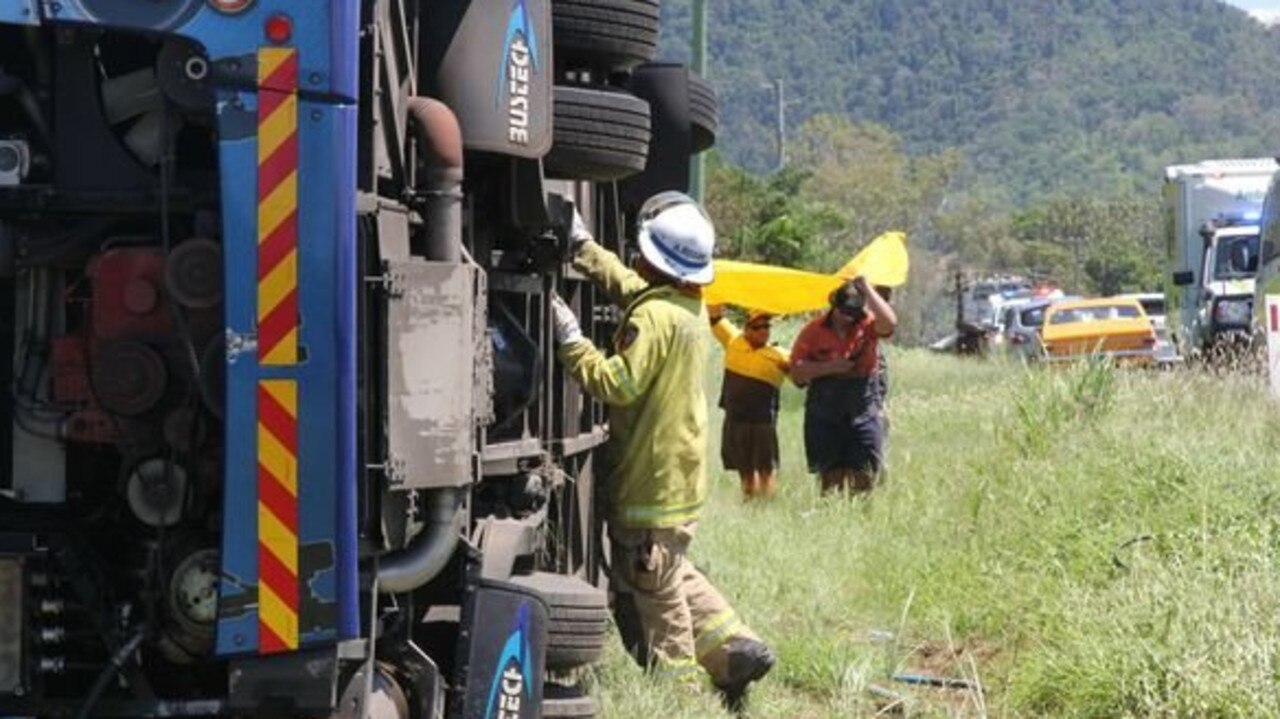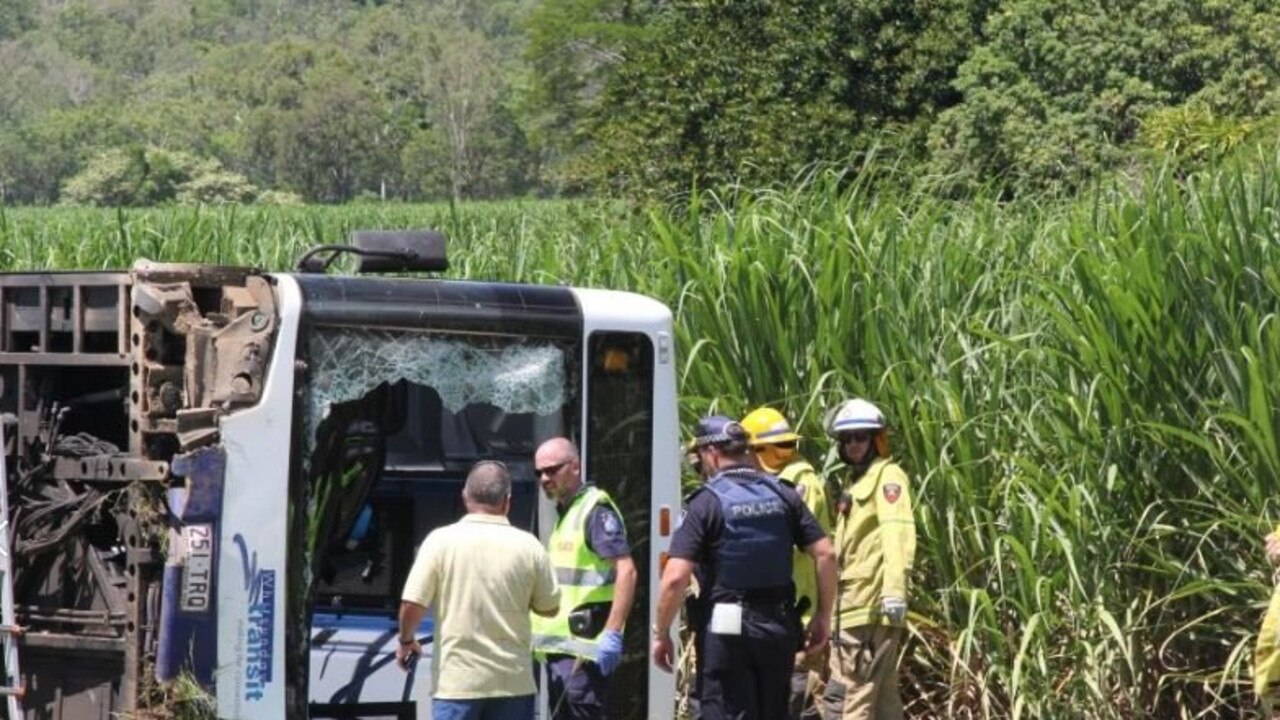Whitsunday bus fatal: Casey Stinson-brown inquest findings handed down
A coroner has called on the state government to mandate seatbelts on route buses within one year on the back of a coronial probe into a fatal Whitsunday bus crash.
Police & Courts
Don't miss out on the headlines from Police & Courts. Followed categories will be added to My News.
A Mackay coroner has called on the state government to mandate seatbelts on route buses within one year after finding a young man would have survived a horror bus crash in the Whitsunday had he been properly restrained.
The key recommendation comes on the back of a coronial inquest into the tragic death of Casey Stinson-Brown, who was flung from his seat striking the roof of the bus and wall when the it left the road and rolled on February 16, 2016.
The 19 year old was among 10 passengers travelling from Cannonvale to Proserpine on a clear, sunny day when the incident occurred on a straight section of Shute Harbour Rd.

He had been sitting in the second last row on the driver’s side when the bus left the road about 1pm at Cannon Valley and struck a concrete culvert and launched into the air before rolling onto its side and sliding about 95 metres.
Mr Stinson-Brown was killed and two other passengers were seriously injured – one suffered a traumatic hand amputation while the other had a “major degloving of the forearm”.
“In fact 10 of the 11 bus occupants required some hospital treatment as a result of the accident,” Central Coroner David O’Connell said in his findings released Thursday.
“To me that is an alarmingly high ratio of serious injury requiring hospitalisation to passengers actually carried.”

CCTV footage at the time and played during the inquest in March this year showed the devastating aftermath of the crash.
“The passengers are violently thrown around within the passenger area of the bus as it rolls onto its side,” Mr O’Connell said.
“They are projected from their seats but are not ejected from the bus itself.”
The bus’s frame remained intact and the seats remained “in place, securely affixed to the floor”.
“It is clear to me and I conclude that if Mr Brown had been restrained in his seat by a properly fitted seatbelt, he would have suffered far less injuries than he did and certainly would not have suffered those non-survivable cranial fractures,” Mr O’Connell said.
“In those circumstances if he had been wearing a seatbelt I think it is reasonable to conclude that he would have suffered non-fatal injuries and so survived the crash.”

Mr O’Connell noted the “sliding single vehicle nature” of the crash was a relevant factor in whether Mr Stinson-Brown would have suffered not fatal injuries.
As to why the bus left the roadway, Mr O’Connell said the likely cause was “that of the driver’s own actions”.
Alan Dorman was 70 years old – he died about six months after the crash from advanced lung cancer. He had not been diagnosed at the time of the tragedy.
“I think the highest I can conclude is that the bus left the road due to momentary driver inattention to the task of driving,” Mr O’Connell said.
“What this inquest has highlighted to me is that bus accidents can occur in the most innocuous of circumstances and here we had a bus travelling along a straight road at 80km/hr which simply left the road and slid to a halt over about 95 metres.

“It was not a calamitous crash … yet still, a young man who was simply travelling home from TAFE lost his life.
“Mr Brown’s death was to my mind an entirely preventable death.”
Route buses can seat up to 51 people plus a further 42 standing passengers.
“So there is great potential for mass injuries from just a single vehicle bus accident,” Mr O’Connell said.
There are currently no mandates for seatbelts on route buses only for buses carrying schoolchildren on a particular type of roadway.
Mr O’Connell also noted that while bus manufacturers already offered seatbelts, “it merely appears to be a case of willingness to embrace this”.

Mr O’Connell has recommended “the state government implement within one year a requirement that buses on route services must have compliant lap/sash seatbelts fitted for each passenger seat for every newly manufactured bus entering service after December 1, 2022”.
He also recommends all remaining buses either be made seatbelt compliant within 10 to 12 years or retired from service.
“It is well-recognised that coroners do not make laws; all we can do is recommend legislative or regulatory change directed at matters such as public health or safety or a way to prevent deaths from happening in similar circumstances in the future,” he said in his findings.
“While it was highlighted to me at the inquest that various instruments and a convention presently do not specify that seatbelts need to be fitted, there is no penalty in mandating for Queensland a higher standard.”
More Coverage
Originally published as Whitsunday bus fatal: Casey Stinson-brown inquest findings handed down









